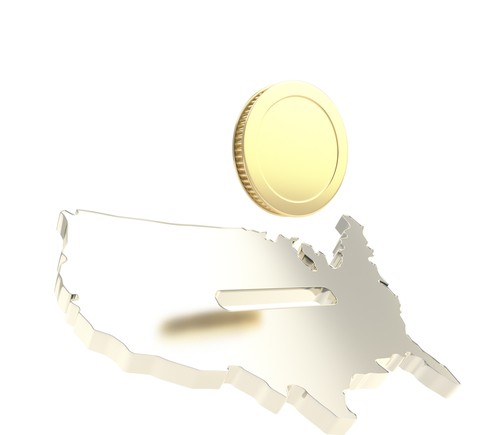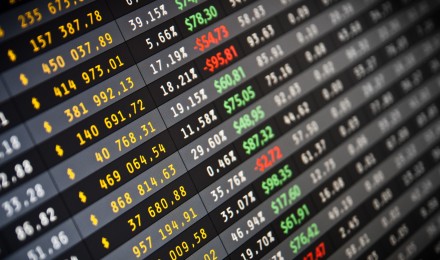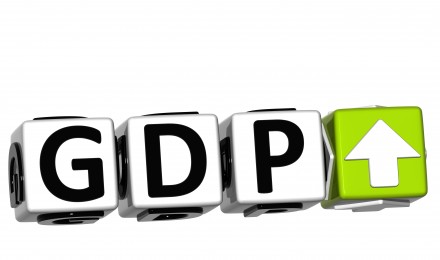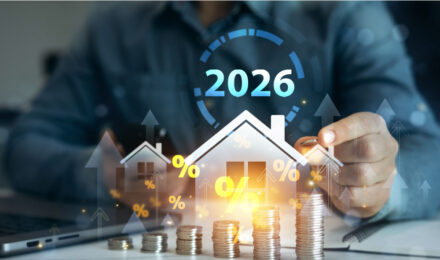The Commerce Department reports that the US economy had a better showing for the second quarter of 2012. Gross domestic product (GDP) grew at a 1.7 percent. However, the rate of expansion continues move at a pace below the rate required for healthy growth. The slow rate of growth increases the likelihood that the Federal Reserve Board will initiate monetary easing at next month’s policy meeting.
An increase in exports made up for declining business inventory as companies hesitate to restock store shelves in response to weak consumer demand for goods. Although revised up from last month’s estimate of 1.5 percent, GDP expansion remains slower than the 2.0 percent growth rate recorded for the first three months of the year.
The report also revealed that after-tax profits for corporations increased at a rate of 1.1 percent compared to an 8.6 percent decline January-March.
Fed May Act to Stimulate Economy
Overall, the makeup of economic activity for Q2 showed positive signs. Nonetheless, the economy needs to expand at an annual growth rate of 2 percent to 2.5 percent each quarter. Despite recent data, which show stronger job growth and retail sales figures, the talk making the rounds points to the Fed taking action to grow the economy by introducing more economic stimulus.
Economic indicators tracking business investment, consumer spending and inflation support the contention that the policy committee will act in its meeting schedule for September 12-13.
With the employment rate edging up from 8.3 percent in July compared to 8.2 percent in June, the White House finds itself in the position of explain a weak economy as President Obama tries to win another term in office.
Other Q2 GDP Data
The Q2 GDP report revised first quarter figures up, which received a boost from strong export sales even with a sluggish global economy. This segment contributed 0.32 percentage points to GDP growth, instead of declining 0.33 percentage points as previously reported. From April-June, business inventories grew to $49.9 billion, instead of $66.3 billion – subtracting 0.23 percentage point from the domestic production of goods and services.
Revisions to consumer spending increased the annual growth rate for the first quarter to 1.7 percent, instead of 1.5 percent as previously reported. Consumer spending, which accounts for 70 percent of domestic spending and is a critical indicator used to measure the health of the economy, fell well short of the record annual rate of 2.4 percent set in the first quarter.
Non-residential construction investment came in stronger than anticipated. Investment in business software and equipment felled to its lowest growth rate since the third quarter of 2009, to 4.7 percent. In the first quarter, this component of GDP grew at a rate of 7.2 percent. Business investment has been in a bit of a freefall since reaching a peak of 18.3 percent in the third quarter of 2011. Companies have significant concerns about the Eurozone debt crisis and the possibility of spending cuts and higher taxes here at home.
Outlays for homebuilding decrease from an annual growth rate of 9.7 percent to 8.9 percent. Government spending fared better than prognosticators expected, falling to 0.1 percent instead of 0.4 percent. The price index for personal spending maintained an unrevised pace of 0.7 percent compared to 2.5 percent for the period Jan-March. The current pace represents slowest growth rate since April-June 2010.
The Commerce Department reports that the US economy had a better showing for the second quarter of 2012. Gross domestic product (GDP) grew at a 1.7 percent. However, the rate of expansion continues move at a pace below the rate required for healthy growth. The slow rate of growth increases the likelihood that the Federal Reserve Board will initiate monetary easing at next month’s policy meeting.
An increase in exports made up for declining business inventory as companies hesitate to restock store shelves in response to weak consumer demand for goods. Although revised up from last month’s estimate of 1.5 percent, GDP expansion remains slower than the 2.0 percent growth rate recorded for the first three months of the year.
The report also revealed that after-tax profits for corporations increased at a rate of 1.1 percent compared to an 8.6 percent decline January-March.
Fed May Act to Stimulate Economy
Overall, the makeup of economic activity for Q2 showed positive signs. Nonetheless, the economy needs to expand at an annual growth rate of 2 percent to 2.5 percent each quarter. Despite recent data, which show stronger job growth and retail sales figures, the talk making the rounds points to the Fed taking action to grow the economy by introducing more economic stimulus.
Economic indicators tracking business investment, consumer spending and inflation support the contention that the policy committee will act in its meeting schedule for September 12-13.
With the employment rate edging up from 8.3 percent in July compared to 8.2 percent in June, the White House finds itself in the position of explain a weak economy as President Obama tries to win another term in office.
Other Q2 GDP Data
The Q2 GDP report revised first quarter figures up, which received a boost from strong export sales even with a sluggish global economy. This segment contributed 0.32 percentage points to GDP growth, instead of declining 0.33 percentage points as previously reported. From April-June, business inventories grew to $49.9 billion, instead of $66.3 billion – subtracting 0.23 percentage point from the domestic production of goods and services.
Revisions to consumer spending increased the annual growth rate for the first quarter to 1.7 percent, instead of 1.5 percent as previously reported. Consumer spending, which accounts for 70 percent of domestic spending and is a critical indicator used to measure the health of the economy, fell well short of the record annual rate of 2.4 percent set in the first quarter.
Non-residential construction investment came in stronger than anticipated. Investment in business software and equipment felled to its lowest growth rate since the third quarter of 2009, to 4.7 percent. In the first quarter, this component of GDP grew at a rate of 7.2 percent. Business investment has been in a bit of a freefall since reaching a peak of 18.3 percent in the third quarter of 2011. Companies have significant concerns about the Eurozone debt crisis and the possibility of spending cuts and higher taxes here at home.
Outlays for homebuilding decrease from an annual growth rate of 9.7 percent to 8.9 percent. Government spending fared better than prognosticators expected, falling to 0.1 percent instead of 0.4 percent. The price index for personal spending maintained an unrevised pace of 0.7 percent compared to 2.5 percent for the period Jan-March. The current pace represents slowest growth rate since April-June 2010.






